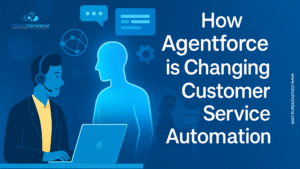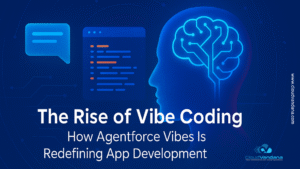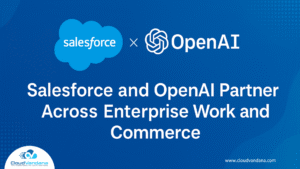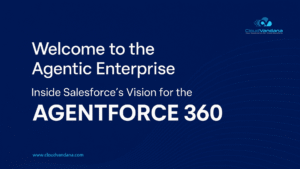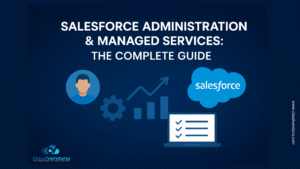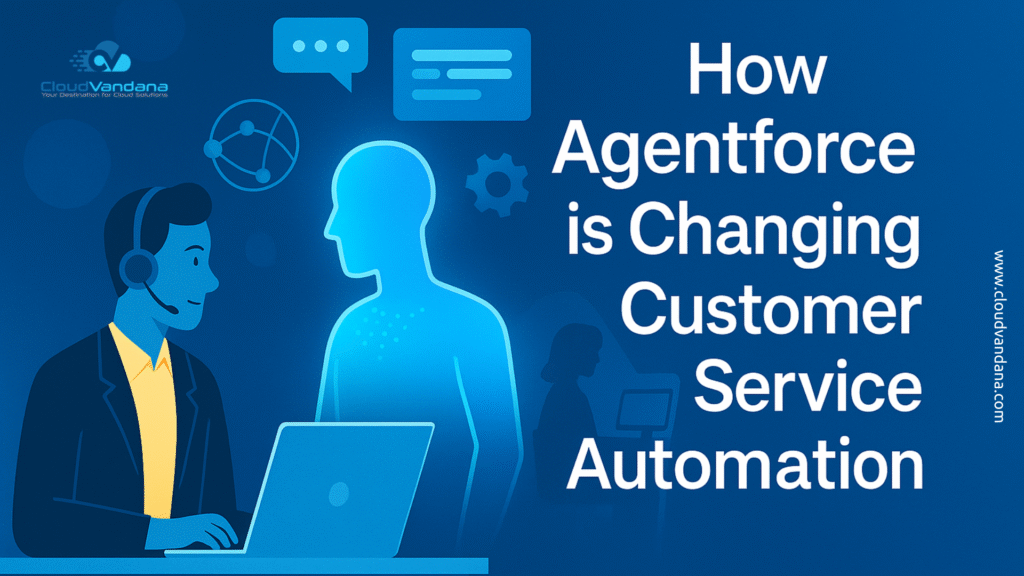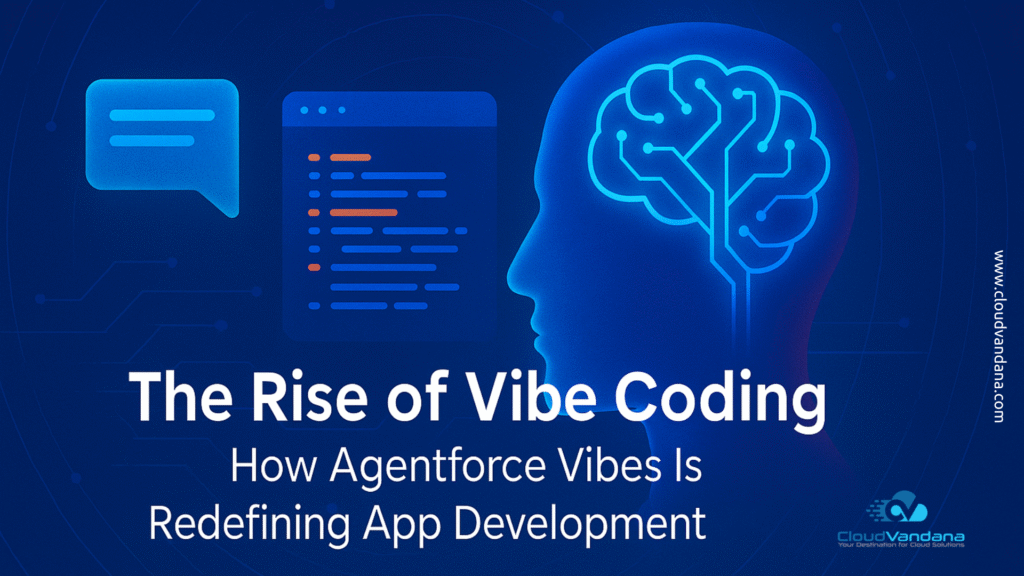The Centrality of Integration in Salesforce Architecture
Salesforce has become the centerpiece of enterprise customer engagement. But its true strength is not confined to the CRM interface or the data it holds. The real power emerges when Salesforce communicates fluently with the vast ecosystem of systems that surround it—finance, HR, supply chain, data warehouses, and third-party SaaS applications. Without integration, Salesforce risks becoming just another silo, disconnected from the broader digital fabric of the business.
Integration is the lifeblood that allows enterprises to deliver seamless workflows, accurate reporting, and responsive customer experiences. Imagine a customer service agent who can instantly view a client’s recent orders from SAP, payment status from Oracle, and support ticket history from ServiceNow—all while working inside Salesforce. This is the type of orchestration modern organizations expect, and it is only possible when architects select and apply the right integration patterns. For Salesforce Architects, understanding these patterns is not optional—it is essential to delivering systems that are robust, adaptable, and business-aligned.
Table of Contents
- The Centrality of Integration in Salesforce Architecture
- Why Integration Matters in the Modern Enterprise
- Salesforce as the Hub of Enterprise Connectivity
- The Role of the Salesforce Architect in Integration Strategy
- Integration Pattern 1: Remote Call-In (Inbound to Salesforce)
- Integration Pattern 2: Remote Call-Out (Outbound from Salesforce)
- Integration Pattern 3: Data Virtualization (UI and Data-Level Access Without Duplication)
- Integration Pattern 4: Batch Data Synchronization
- Integration Pattern 5: Event-Driven Architecture (EDA)
- Comparative Analysis of the Five Patterns
- Governance and Documentation for Integration Success
- Emerging Trends: APIs, AI, and Composable Architecture
- Conclusion: The Architect’s Responsibility in Building Resilient Enterprises
- Elevating Enterprise Integration with Expert Guidance
- YOU MIGHT ALSO LIKE
Why Integration Matters in the Modern Enterprise
The reality of fragmented ecosystems
Modern organizations run on dozens, sometimes hundreds, of specialized systems. Finance may run on SAP, HR may live in Workday, marketing teams may depend on Marketo, and data teams may lean on Snowflake. Each system is optimized for its unique purpose, but the specialization creates fragmentation. Left unmanaged, these systems become silos where data lives in isolation, processes break down, and decision-makers face conflicting truths.

Salesforce often sits at the center of this chaos, but even it cannot fulfill its role as the “single source of truth” without connectivity. If integration is neglected, sales teams may be quoting prices on outdated product catalogs, service teams may be working with incomplete customer histories, and leaders may be analyzing reports based on partial datasets. Fragmentation doesn’t just create inefficiency; it undermines trust across the organization.
Customer experience as the ultimate driver
At the heart of integration lies the customer. End users do not care about technical complexity or backend fragmentation. They expect that every touchpoint with a brand—whether through sales, support, or marketing—feels consistent, relevant, and timely. If a customer purchases a product online, they assume support agents will know about it instantly. If a service request is logged, they expect that billing and renewal processes will reflect the change.
Integration bridges the gap between these expectations and operational reality. When done right, it creates the seamless experiences that build loyalty and differentiate a brand. When ignored, it leads to disjointed conversations, repetitive questions, and a loss of credibility.
Salesforce as the Hub of Enterprise Connectivity
The CRM as a system of record
Salesforce is often the beating heart of customer data. It stores leads, opportunities, accounts, and service cases—the touchpoints that shape an organization’s relationship with its clients. Yet Salesforce does not exist in a vacuum. Critical data such as product availability, billing history, and shipment tracking resides in other systems. Without integration, Salesforce provides only a partial snapshot of reality.
By acting as the central hub of enterprise connectivity, Salesforce brings disparate datasets together into a unified view. This does not always mean every piece of data must physically reside inside Salesforce; rather, it means Salesforce acts as the trusted orchestration point where customer context can be viewed holistically.
Salesforce’s evolving integration landscape
The integration toolkit in Salesforce has matured dramatically. What started with simple APIs has expanded into a powerful ecosystem: MuleSoft for enterprise-grade integrations, Salesforce Connect for virtualization, Platform Events for real-time messaging, and External Services for API-first orchestration. This diversity allows architects to craft integration strategies that are both flexible and forward-looking.
Instead of being forced into a “one-size-fits-all” approach, architects can select the right pattern for the right scenario. Whether the business needs real-time responsiveness, cost-efficient access, or batch-based reliability, Salesforce provides the mechanisms to deliver.
The Role of the Salesforce Architect in Integration Strategy
Beyond technical execution
The role of the Salesforce Architect extends far beyond writing Apex code or configuring APIs. Architects must act as strategic advisors, ensuring integrations serve business priorities. They translate executive visions into technical blueprints, balancing innovation with pragmatism.
For example, while a developer may focus on making a single outbound API call work, the architect considers questions like: How will this scale when transaction volumes triple? How will this comply with security standards? What governance model ensures consistency across teams? By taking a holistic perspective, architects prevent short-term fixes from becoming long-term liabilities.
Balancing speed, scalability, and governance
Integration projects often face pressure from multiple directions. Business units demand rapid delivery. IT demands scalability and resilience. Compliance officers demand security and auditability. The architect’s job is to balance these competing priorities.
This balance requires trade-offs. A quick point-to-point integration may satisfy immediate needs but create technical debt. A slower, well-governed approach may delay rollout but ensure sustainability. The hallmark of a strong architect is knowing when to prioritize agility and when to enforce discipline—always with an eye on long-term enterprise health.
Integration Pattern 1: Remote Call-In (Inbound to Salesforce)
Concept and Core Mechanics of Remote Call-In
Remote call-in, also known as inbound integration, enables external systems to interact with Salesforce directly through its API framework. Salesforce provides REST, SOAP, and Bulk APIs that allow third-party applications to create, update, read, or delete records programmatically.
This mechanism effectively turns Salesforce into a service provider. External platforms can push data into Salesforce without manual intervention, ensuring that Salesforce remains up to date with real-world activities happening outside its borders.
Use Cases Where Remote Call-In Excels
- Mobile applications feeding customer activity directly into Salesforce.
- Legacy ERP systems pushing order transactions into the CRM for visibility.
- E-commerce platforms updating Salesforce with new purchases, enabling immediate follow-up actions.
These scenarios demonstrate Salesforce’s ability to remain synchronized with the rest of the enterprise in near real time.
Design Considerations and Pitfalls
R emote call-ins are deceptively simple to implement, but without careful planning they can create performance bottlenecks. API limits, concurrency controls, and error handling must be factored in from the start. A poorly designed integration could flood Salesforce with calls, exhausting limits and disrupting other critical processes.
Security and Governance Best Practices
Security is paramount. Every remote call-in must be authenticated through secure protocols such as OAuth 2.0. IP restrictions should be enforced to reduce exposure, and all inbound traffic should be logged and monitored for anomalies. Beyond technical safeguards, governance requires clear ownership and documentation—ensuring that external integrations do not evolve into “shadow IT.”
Integration Pattern 2: Remote Call-Out (Outbound from Salesforce)
Understanding Remote Call-Out Architecture
Outbound integrations are initiated by Salesforce. Through Apex callouts, named credentials, or platform events, Salesforce can push data to external systems or request information when needed. This pattern transforms Salesforce from a passive receiver into an active orchestrator of enterprise workflows.
Common Business Scenarios for Remote Call-Out
- Payment gateways: Salesforce sends transaction requests to external processors.
- Shipping systems: Order confirmations trigger real-time calls to logistics providers.
- ERP updates: Salesforce opportunities closing trigger automatic inventory adjustments in SAP or Oracle.
Handling Latency and Error Management
External systems are not always reliable. Latency, outages, and unexpected responses must be accounted for. Architects use asynchronous approaches—such as queueable Apex, future methods, or platform events—to ensure Salesforce continues functioning even when external systems falter. Error management strategies, including retry logic, dead-letter queues, and fallback notifications, preserve data integrity.
Real-World Design Example
Consider a global insurance company. When an agent submits a claim in Salesforce, an outbound call is made to the underwriting system. The external system validates eligibility, applies risk scoring, and responds asynchronously. Salesforce updates the claim record automatically. This seamless interaction transforms what could be a multi-step manual process into an efficient, real-time workflow.
Integration Pattern 3: Data Virtualization (UI and Data-Level Access Without Duplication)
What Data Virtualization Means in Salesforce Context
Data virtualization allows Salesforce users to view and interact with data stored in external systems without physically importing it. Tools like Salesforce Connect and external objects enable this capability, giving the illusion that the data is local while it is actually accessed in real time.

The Benefits of Avoiding Data Duplication
Avoiding duplication is not only about storage savings. It reduces synchronization overhead, eliminates the risk of inconsistencies, and ensures users always work with the most current version of data. Instead of syncing millions of records nightly, Salesforce can fetch exactly what it needs on demand.
Performance Trade-Offs and Caching Strategies
The trade-off lies in speed. Virtualized data depends on the performance of the external system. To prevent sluggish experiences, architects design caching mechanisms, selective queries, and smart indexing. Some data may be cached locally for faster access, while still maintaining links to the source for accuracy.
Example: Accessing Legacy Systems Through Virtualization
Imagine a manufacturing company with decades of product history stored in a legacy SQL database. Migrating terabytes into Salesforce would be impractical and costly. By using external objects, employees can access historical records directly from Salesforce, run reports, and combine them with CRM data—without ever duplicating the source.
Integration Pattern 4: Batch Data Synchronization
Defining the Synchronization Approach
Batch synchronization moves data in scheduled intervals, often nightly or hourly. Instead of attempting real-time updates, the focus is on reliably moving large volumes at predictable times. Tools such as MuleSoft, Informatica, or Salesforce Data Loader often support this pattern.
Ideal Use Cases for Batch Processing
- Financial reconciliations: Nightly updates of accounting records.
- Marketing alignment: Periodic synchronization between CRM and campaign platforms.
- Data migrations: Moving historical datasets into Salesforce or archiving older ones.
Designing for Volume and Scalability
When handling millions of records, efficiency is paramount. Architects employ partitioning, parallelization, and incremental sync strategies to avoid overwhelming systems. Logging pipelines track successes and failures, enabling administrators to reprocess errors without restarting entire jobs.
Common Pitfalls in Batch Integration
The most common pitfall is staleness. A nightly sync may leave Salesforce users working with data that is hours old, unsuitable for real-time operations. Over-reliance on batch jobs can also create “data storms,” where multiple systems attempt to process huge datasets simultaneously, straining infrastructure.
Integration Pattern 5: Event-Driven Architecture (EDA)
The Rise of Event-Driven Paradigms
Modern enterprises are shifting away from monolithic batch-driven approaches toward event-driven systems. Instead of waiting for scheduled updates, systems respond instantly when changes occur, enabling agility and decoupling.
Salesforce Platform Events and Change Data Capture
Salesforce supports EDA through Platform Events and Change Data Capture (CDC). Platform Events allow architects to define custom event messages, while CDC automatically broadcasts changes to standard and custom objects. Both create a publish-subscribe model where multiple systems can react to the same event simultaneously.
Use Cases: Real-Time Notifications and System Decoupling
- Fulfillment systems: Triggering order processing the moment an opportunity closes.
- Engagement platforms: Updating customer preferences instantly when records change.
- Analytics pipelines: Streaming near-real-time updates into data lakes for immediate reporting.
Designing Event Meshes and Future-Proof Systems
An event mesh extends this concept further. By interconnecting multiple event brokers across cloud and on-premises systems, organizations create resilient, flexible networks of events. This future-proofs the enterprise against new requirements, ensuring systems can evolve without wholesale redesigns.
Comparative Analysis of the Five Patterns
When to use what
Each pattern serves a distinct purpose:
- Remote Call-In: Best when external systems need to drive Salesforce updates.
- Remote Call-Out: Ideal when Salesforce initiates business-critical interactions.
- Virtualization: Optimal for accessing external data without duplicating it.
- Batch Sync: Reliable for high-volume periodic movements.
- Event-Driven: Perfect for real-time, decoupled interactions.
Layering patterns together
Rarely does an enterprise rely on one pattern alone. A sophisticated architecture often combines them. For instance, a retail order process might use event-driven updates for fulfillment, batch synchronization for nightly analytics, and virtualization for historical data access. The art of architecture lies in knowing how to weave these patterns into a cohesive strategy.
Governance and Documentation for Integration Success
Even the best patterns fail without governance. Without documentation, integrations devolve into brittle point-to-point connections—creating “spaghetti architecture” that is difficult to maintain. A governance framework ensures consistency, compliance, and sustainability.
This includes standardizing on naming conventions, establishing version control, monitoring usage, and assigning ownership. Documentation must extend beyond technical specs to include business rationale, ensuring future teams understand why integrations exist and how they fit into the bigger picture.
Emerging Trends: APIs, AI, and Composable Architecture
The integration landscape is rapidly evolving. APIs have become the lingua franca of enterprise connectivity, enabling modular, composable systems. AI is beginning to influence integration by automating anomaly detection, predicting failures, and even recommending optimization strategies.
Composable architecture—where systems are treated as interchangeable building blocks—relies heavily on strong integration foundations. Architects who master today’s patterns are better prepared to adopt tomorrow’s innovations.
Conclusion: The Architect’s Responsibility in Building Resilient Enterprises
Salesforce Architects hold enormous responsibility. Their integration choices affect not only technical systems but also customer satisfaction, compliance, and strategic agility. Poorly designed integrations create fragility, while well-architected ones become the backbone of growth.
By mastering the five core integration patterns—remote call-in, remote call-out, virtualization, batch synchronization, and event-driven architecture—architects can design solutions that balance speed, scalability, and security. These are not abstract theories; they are practical blueprints for building enterprises that thrive in a connected world.
Elevating Enterprise Integration with Expert Guidance
Enterprises no longer succeed by connecting systems in isolation. They succeed by creating intelligent ecosystems where Salesforce acts as the orchestrator of customer experience. Achieving this requires architectural discipline and foresight.
With proven expertise in Salesforce consulting and integration, CloudVandana helps organizations eliminate silos, simplify complexity, and future-proof their operations. Whether you are designing your first integration or rethinking an existing landscape, now is the time to elevate your enterprise integration strategy. Build it right. Build it resilient.
With proven expertise in Salesforce consulting and integration, CloudVandana helps organizations eliminate silos, simplify complexity, and future-proof their operations. Whether you are designing your first integration or rethinking an existing landscape, now is the time to elevate your enterprise integration strategy. Build it right. Build it resilient.
Partner with CloudVandana today to design Salesforce integrations that unlock true business value and accelerate digital transformation. Explore our Salesforce Services.
Smaller organizations can start with AppExchange connectors for essential systems, adopt phased rollouts, and scale up as requirements grow. Careful prioritization ensures they achieve impact without over-investing upfront.

Atul Gupta is CloudVandana’s founder and an 8X Salesforce Certified Professional who works with globally situated businesses to create Custom Salesforce Solutions.
Atul Gupta, a dynamic leader, directs CloudVandana’s Implementation Team, Analytics, and IT functions, ensuring seamless operations and innovative solutions.




